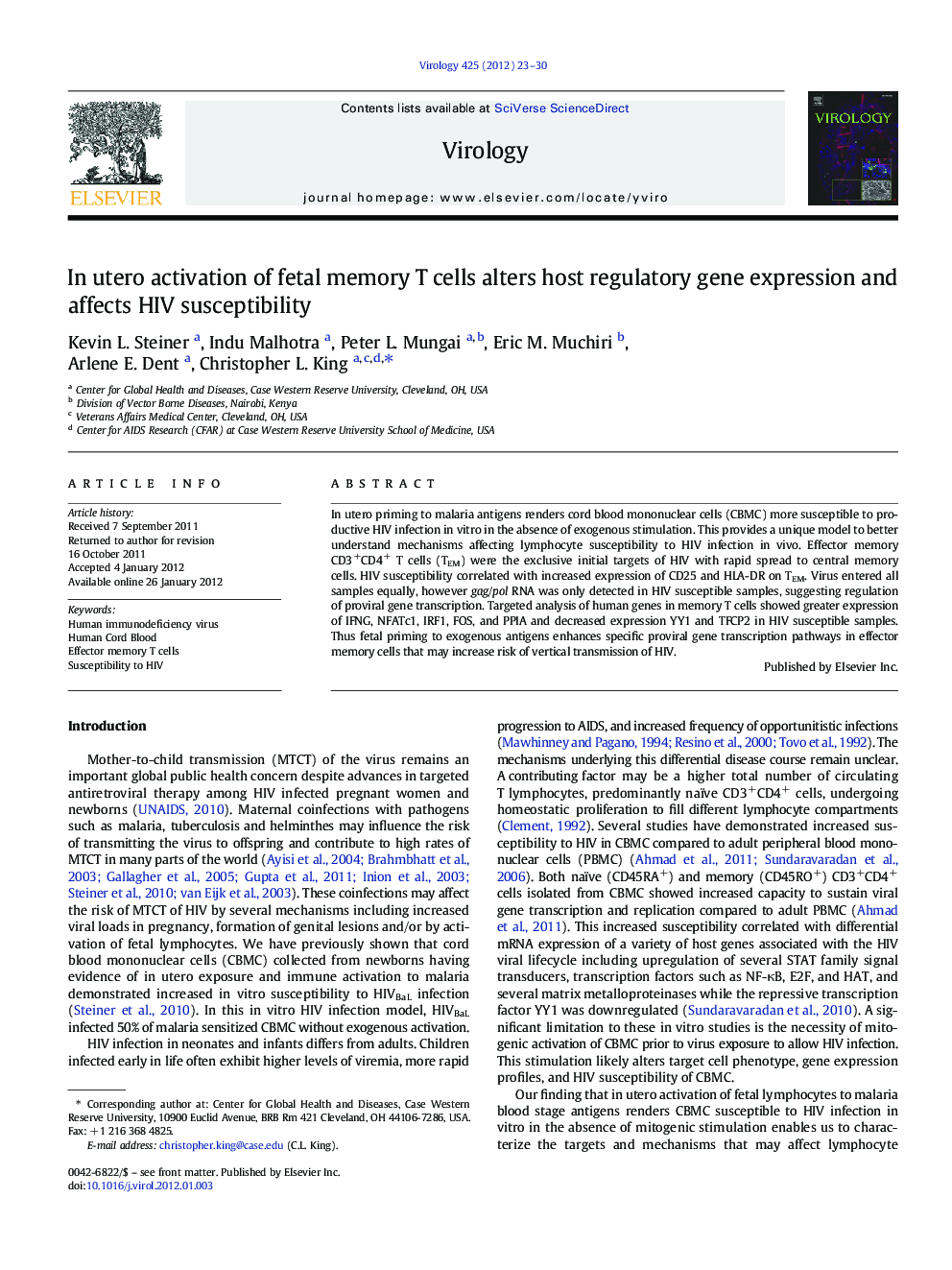| Article ID | Journal | Published Year | Pages | File Type |
|---|---|---|---|---|
| 3424487 | Virology | 2012 | 8 Pages |
In utero priming to malaria antigens renders cord blood mononuclear cells (CBMC) more susceptible to productive HIV infection in vitro in the absence of exogenous stimulation. This provides a unique model to better understand mechanisms affecting lymphocyte susceptibility to HIV infection in vivo. Effector memory CD3+CD4+ T cells (TEM) were the exclusive initial targets of HIV with rapid spread to central memory cells. HIV susceptibility correlated with increased expression of CD25 and HLA-DR on TEM. Virus entered all samples equally, however gag/pol RNA was only detected in HIV susceptible samples, suggesting regulation of proviral gene transcription. Targeted analysis of human genes in memory T cells showed greater expression of IFNG, NFATc1, IRF1, FOS, and PPIA and decreased expression YY1 and TFCP2 in HIV susceptible samples. Thus fetal priming to exogenous antigens enhances specific proviral gene transcription pathways in effector memory cells that may increase risk of vertical transmission of HIV.
► In utero priming increases susceptibility to HIV without exogenous stimulation. ► Effector memory T cells are primary initial target of infection in this system. ► Susceptibility to HIV correlates with increased activation of memory cells. ► HIV gene expression but not virus entry correlated with susceptibility. ► Host gene expression differed between susceptible and not susceptible samples.
